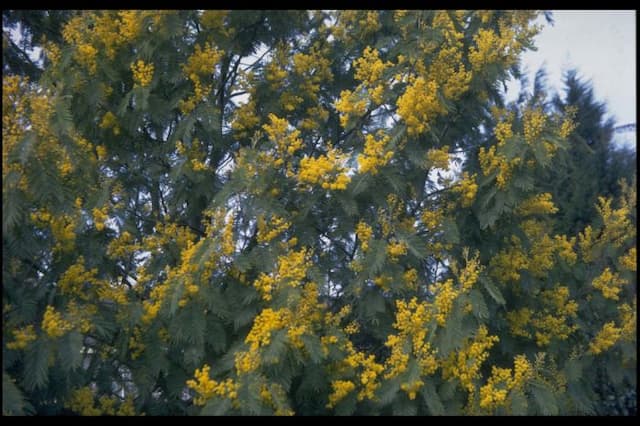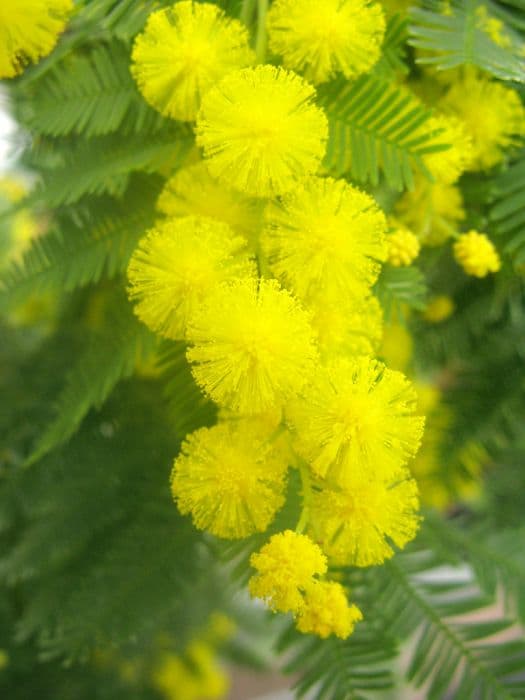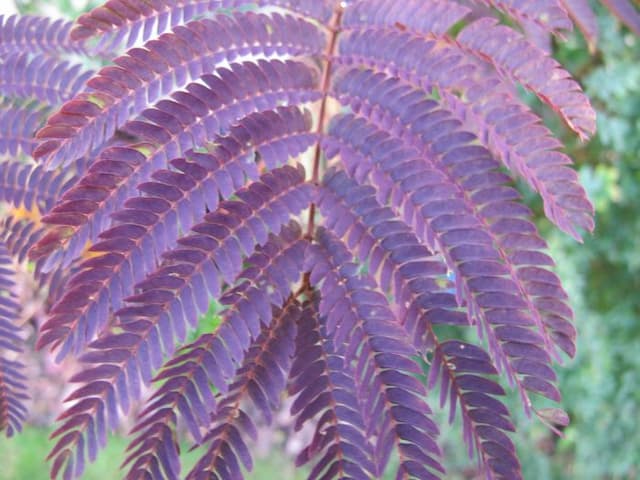Macadamia Macadamia nut

ABOUT
Macadamia nuts are not typically described in terms of length or size in feet and inches, as they are small edible nuts. However, I can provide a general description of Macadamia nuts for you:
Macadamia nuts are round or oval-shaped nuts that are roughly 0.5 to 1 inch (1.27 to 2.54 centimeters) in diameter. They have a hard, woody shell that is typically brown in color and can be quite tough to crack. Inside the shell, Macadamia nuts have a smooth, cream-colored kernel that is known for its rich, buttery flavor. The kernels are the part of the nut that is edible and enjoyed as a delicious snack or used in various culinary preparations.
About this plant
 Names
NamesFamily
Proteaceae
Synonyms
Queensland nut, Rough shell macadamia, Macadamia, Macadamia nut, Maroochie nut, Boppelfnut, Smooth-skin macademia
Common names
Macadamia integrifolia, Macadamia jansenii, Macadamia ternifolia, Macadamia tetraphylla
 Toxicity
ToxicityTo humans
Macadamia nuts are generally safe for human consumption and are not considered toxic. They are a popular and widely enjoyed nut known for their rich flavor and nutritional benefits. However, some individuals may experience allergic reactions to Macadamia nuts, similar to other tree nuts. It's important for those with known nut allergies to exercise caution and avoid Macadamia nuts if advised by a healthcare professional.
To pets
Macadamia nuts can be toxic to certain animals, particularly dogs. While the exact cause of the toxicity is not fully understood, even small amounts of Macadamia nuts or foods containing Macadamia nuts can cause adverse effects in dogs. Symptoms of Macadamia nut toxicity in dogs may include weakness, vomiting, tremors, elevated body temperature, and an inability to walk properly. If a dog ingests Macadamia nuts, it is recommended to seek veterinary care immediately for appropriate treatment and guidance. It's important to keep Macadamia nuts and foods containing them out of reach of pets to prevent accidental ingestion.
 Characteristics
CharacteristicsLife cycle
Perennials
Foliage type
Evergreen
Color of leaves
Green
Plant type
Tree
Hardiness zones
9
Native area
Australia
Benefits
 General Benefits
General BenefitsNutritional Value: Macadamia nuts are rich in healthy fats, including monounsaturated fats, which can support heart health and help maintain healthy cholesterol levels.
Energy Boost: Macadamia nuts are a calorie-dense food, providing a good source of energy. They can be a nutritious snack option for active individuals or those needing an energy boost.
Antioxidant Properties: Macadamia nuts contain antioxidants, such as vitamin E, which help combat oxidative stress and protect cells from damage caused by free radicals.
Nutrient Diversity: Macadamia nuts are a source of various essential nutrients, including vitamins and minerals such as magnesium, manganese, and thiamine (vitamin B1). These nutrients play important roles in overall health and well-being.
Satiety and Weight Management: The combination of healthy fats, fiber, and protein in Macadamia nuts can promote a feeling of fullness and help regulate appetite. Including them in meals or snacks may assist with weight management goals.
Culinary Versatility: Macadamia nuts have a rich, creamy, and slightly sweet flavor, making them a versatile ingredient in various culinary preparations. They can be used in both savory and sweet dishes, including salads, stir-fries, desserts, and baked goods.
Texture and Crunch: Macadamia nuts have a satisfyingly crunchy texture that adds a pleasant element to dishes. They can enhance the enjoyment of meals and provide a unique mouthfeel.
Plant-Based Protein: Macadamia nuts contain a moderate amount of protein, making them a suitable choice for individuals following vegetarian or vegan diets or those looking to incorporate plant-based protein sources.
Source of Dietary Fiber: Macadamia nuts offer dietary fiber, which aids digestion and contributes to overall gut health. Adequate fiber intake supports regular bowel movements and can help maintain a healthy digestive system.
Culinary Delight: Beyond their nutritional benefits, Macadamia nuts are simply delicious. Their rich, buttery taste and satisfying crunch can enhance the enjoyment of meals and snacks, making them a favorite choice for many. Medical Properties
Medical PropertiesHeart Health: Macadamia nuts are rich in monounsaturated fats, specifically oleic acid, which has been linked to improved heart health. Consuming monounsaturated fats as part of a balanced diet may help lower LDL cholesterol levels and reduce the risk of cardiovascular diseases.
Antioxidant Activity: Macadamia nuts contain antioxidants, such as vitamin E and flavonoids, which help combat oxidative stress and protect the body's cells from damage caused by free radicals. Antioxidants play a role in overall health and may contribute to reducing the risk of chronic diseases.
Weight Management: Despite being calorie-dense, Macadamia nuts can still be incorporated into a healthy diet for weight management. The combination of healthy fats, fiber, and protein in Macadamia nuts can contribute to satiety, helping to control appetite and support weight management goals.
Nutrient Profile: Macadamia nuts offer various essential nutrients, including vitamins and minerals such as magnesium, manganese, and thiamine (vitamin B1). These nutrients play important roles in bodily functions and overall well-being. Air-purifying Qualities
Air-purifying QualitiesMacadamia nuts, as a food item, do not possess air purifying qualities
 Other Uses
Other UsesBeauty and Skincare: Macadamia nut oil is known for its moisturizing properties and is often used in beauty and skincare products. It can be found in creams, lotions, and hair care products to nourish and hydrate the skin and hair.
Candle Making: Macadamia nut shells can be repurposed and used in candle making. The shells can serve as decorative elements or be ground into a fine powder to add texture and visual interest to homemade candles.
Crafts and Jewelry: The smooth, rounded shape of Macadamia nuts makes them suitable for various craft projects. They can be painted, varnished, or adorned with beads to create unique jewelry pieces, keychains, or decorative ornaments.
Exfoliating Scrubs: Ground Macadamia nut shells can be used as a natural exfoliant in homemade body scrubs or facial cleansers. The gentle abrasive texture helps remove dead skin cells and promote smoother, rejuvenated skin.
Nut Milk: Macadamia nuts can be blended with water to create a rich and creamy plant-based milk alternative. Macadamia nut milk can be used in beverages, smoothies, or as a dairy-free option in recipes that call for milk.
Culinary Garnish: Crushed or finely chopped Macadamia nuts can be used as a topping or garnish for salads, desserts, or savory dishes. Their buttery flavor and crunchy texture add a delightful twist to various culinary creations.
Woodwork: Macadamia wood, known for its hardness and attractive grain pattern, can be used in woodworking projects. It can be crafted into furniture, cutting boards, or decorative items.
Interesting Facts
 Feng Shui
Feng ShuiIn Feng Shui, various objects are believed to bring positive energy and symbolism to different areas of life. While Macadamia nuts are not specifically mentioned in traditional Feng Shui practices, their qualities of abundance and nourishment can be symbolically incorporated. Placing a bowl of Macadamia nuts in the wealth or abundance area of your home or workspace could be seen as a representation of prosperity and bountiful energy. The act of offering Macadamia nuts to guests or loved ones may also be seen as a gesture of sharing wealth and generosity.
 Zodiac Sign Compitability
Zodiac Sign CompitabilityThere is no specific association between Macadamia nuts and zodiac sign compatibility.
 Plant Symbolism
Plant SymbolismAbundance and Wealth: Macadamia nuts are often seen as a symbol of abundance and wealth due to their rich flavor and high value. They can represent prosperity, success, and the rewards of hard work.
Nourishment and Sustenance: Macadamia nuts are nutrient-dense and provide sustenance. They can symbolize nourishment, both physically and metaphorically, representing the importance of taking care of oneself and others.
Resilience: Macadamia trees are known for their resilience and ability to thrive in challenging environments. Symbolically, Macadamia nuts can represent strength, perseverance, and the ability to overcome obstacles.
Generosity and Sharing: Macadamia nuts can symbolize generosity and the act of sharing abundance with others. They represent the idea of giving and sharing wealth, resources, and kindness.
 Water
WaterProper watering is essential for the health and growth of Macadamia nuts. Here are some guidelines for watering Macadamia nuts:
Watering Frequency: Macadamia trees generally require regular watering, especially during the first few years of growth. Young trees need more frequent watering to establish a strong root system. Water the tree deeply, allowing the water to penetrate the root zone. As the tree matures, it becomes more drought-tolerant, but adequate irrigation is still necessary, particularly during dry periods.
Soil Moisture: Macadamia trees prefer well-draining soil that is evenly moist but not waterlogged. Avoid overwatering, as excessive moisture can lead to root rot. Check the soil moisture regularly by inserting your finger into the soil near the roots. If the top few inches of soil feel dry, it's time to water.
Watering Depth: When watering Macadamia nuts, aim to saturate the soil to a depth of about 12 to 18 inches. This helps encourage deep root growth and allows the tree to access water during dry spells.
Mulching: Apply a layer of organic mulch, such as wood chips or straw, around the base of the tree to help retain soil moisture. Mulch also helps suppress weeds, regulate soil temperature, and improve overall soil health. Light
LightMacadamia trees thrive in full sun, meaning they require at least 6 to 8 hours of direct sunlight per day. They prefer a sunny location with minimal shading from other trees or structures. Adequate sunlight promotes healthy growth, fruit production, and overall vigor in Macadamia nut trees.
 Temperature
TemperatureMacadamia nuts are native to tropical and subtropical regions, and they prefer warm climates. Here are some temperature considerations for Macadamia nuts:
Optimal Temperature: Macadamia nuts thrive in average temperatures ranging from 65°F to 85°F (18°C to 29°C). These temperatures provide optimal conditions for growth, flowering, and fruit development.
Cold Tolerance: While Macadamia trees can tolerate mild cold temperatures for short periods, prolonged exposure to freezing temperatures can damage or kill the trees. The minimum temperature they can survive depends on the specific variety, but generally, temperatures below 25°F (-4°C) can be harmful.
It's crucial to protect Macadamia nut trees from frost or freezing conditions, especially during their early years. Consider providing frost protection measures, such as covering the tree with a frost blanket or using irrigation to create a protective ice coating, if freezing temperatures are expected. Pruning
PruningPruning helps maintain the shape, structure, and productivity of Macadamia nut trees. Here are some pruning guidelines for Macadamia nuts: Timing: Prune Macadamia nut trees during late winter or early spring, before new growth begins. This period allows the tree to recover and minimize the risk of frost damage. Sanitize Tools: Before pruning, ensure that your pruning tools, such as pruning shears or loppers, are clean and sanitized to prevent the spread of diseases. Dip the tools in a solution of 10% bleach or rubbing alcohol and wipe them dry. Remove Dead or Damaged Wood: Start by removing any dead, diseased, or damaged branches. Cut them back to healthy wood, making clean cuts just outside the branch collar (the swollen area where the branch connects to the trunk). Maintain Shape and Structure: Prune to maintain an open canopy and balanced shape. Remove any crossing or crowded branches to improve airflow and light penetration. Maintain a central leader or main trunk with well-spaced lateral branches. Size Control: If necessary, prune to control the size of the tree. Remove excessive growth or overly long branches to manage the overall height and spread of the tree. Avoid heavy pruning, as it can negatively impact fruit production. Remove Suckers and Water Sprouts: Macadamia nut trees may produce suckers or water sprouts, which are vigorous shoots growing from the base or along the trunk. Remove these shoots to direct energy into desired branches and maintain a clean trunk.
 Cleaning
CleaningNot needed
 Soil
SoilMacadamia nuts thrive in well-draining soil that is rich in organic matter. Here are some characteristics of the best soil for Macadamia nuts:
Soil Type: Macadamia nuts prefer sandy loam or loamy soil. These soil types provide good drainage while retaining sufficient moisture for the tree's roots.
pH Level: The ideal soil pH range for Macadamia nuts is between 5.5 and 6.5. This slightly acidic to neutral pH range ensures optimal nutrient availability for the tree.
Organic Matter: Incorporating organic matter, such as compost or well-rotted manure, into the soil helps improve its structure, moisture retention, and nutrient content. It also promotes beneficial microbial activity.
Drainage: Good drainage is crucial for Macadamia nuts as they are susceptible to root rot in waterlogged soil. Ensure the soil has adequate drainage to prevent excess water accumulation around the roots.
Soil Testing: Conduct a soil test to determine the nutrient levels, pH, and composition of the soil. This will provide specific recommendations for any necessary soil amendments based on the results. Repotting
RepottingMacadamia nuts are typically grown in the ground
 Humidity & Misting
Humidity & MistingMacadamia nuts prefer moderate to high humidity levels. While they can tolerate a range of humidity conditions, here are some considerations:
Ideal Range: Macadamia nuts thrive in humidity levels ranging from 50% to 80%. These humidity levels mimic the natural tropical and subtropical environments where they are native.
Moisture Balance: While Macadamia nuts appreciate humidity, it's important to avoid excessively damp conditions, which can lead to fungal diseases. Good air circulation and proper soil drainage help maintain a healthy balance of moisture around the tree.
Local Climate: Adjustments may be needed based on the climate of your specific region. If you live in a drier or arid climate, increasing humidity around the tree can be achieved by methods such as misting the foliage or using a humidifier indoors. Suitable locations
Suitable locationsIndoor
Not growing
Outdoor
Grown as a street plant in a suitable climate
Hardiness zone
7-10 USDA
 Life cycle
Life cycleSeed Selection and Preparation (Months: Anytime):
The process begins by selecting high-quality Macadamia nut seeds or seedlings. Seeds can be obtained from reputable nurseries or extracted from mature Macadamia nuts. Ensure the seeds are healthy and free from damage or disease. If starting from seeds, they can be soaked in water for 24 hours to help with germination.
Germination and Seedling Stage (Months: Anytime):
Plant the Macadamia nut seeds in small pots or seed trays filled with a well-draining potting mix. Place the containers in a warm and sunny location, such as a greenhouse or a well-lit window. The seeds will germinate within a few weeks, and seedlings will emerge.
Transplanting to the Field (Months: Spring or Early Summer):
When the Macadamia nut seedlings reach a height of about 6 to 12 inches (15 to 30 centimeters) and have developed a good root system, they can be transplanted into their permanent growing location in the field. Choose a site with well-draining soil, ample sunlight, and adequate spacing between trees.
Vegetative Growth (Months: Spring to Summer):
After transplanting, the Macadamia nut trees will enter a period of vegetative growth. During this stage, the trees will focus on developing a strong root system, growing taller, and developing foliage. Regular watering, fertilization, and weed control are important during this stage to support healthy growth.
Flowering (Months: Late Winter to Spring):
Macadamia nut trees typically begin to flower in late winter to early spring, depending on the climate and variety. Clusters of small, fragrant flowers in shades of creamy white or pale pink will appear on the tree. These flowers are essential for pollination and subsequent fruit development.
Fruit Development (Months: Spring to Summer):
After successful pollination, the Macadamia nut flowers will develop into fruit. The nut clusters will start to grow and mature. It takes several months for the nuts to fully develop and reach their optimum size and flavor. During this period, it is crucial to provide proper irrigation and ensure consistent growing conditions for the best fruit quality.
Harvesting (Months: Late Summer to Autumn):
Macadamia nuts are harvested when they are fully mature and have fallen naturally from the tree. Harvesting times vary depending on the region and the specific variety being grown. In general, harvest occurs from late summer to autumn. Nuts can be collected from the ground or carefully picked from the tree, depending on the method preferred. It is important to handle the harvested nuts with care to avoid damage. Propogation
PropogationPropogation time
Spring - summer
Seed Propagation:
Propagation of Macadamia nuts from seeds is a common method, although it takes longer for the trees to reach maturity and produce nuts. Here are the steps for seed propagation:
Seed Collection: Collect mature Macadamia nuts from healthy and disease-free trees. Remove the husks and extract the seeds.
Seed Preparation: Soak the seeds in water for 24 to 48 hours to enhance germination. Some sources recommend scarifying or nicking the seed coat with a file or sandpaper to promote better water absorption.
Seed Sowing: Plant the prepared seeds in pots or seed trays filled with well-draining potting mix. Place the seeds horizontally about 1 inch (2.5 centimeters) deep.
Germination and Seedling Stage: Keep the seeds in a warm and well-lit location, such as a greenhouse or a sunny window. Germination typically occurs within 4 to 6 weeks. Once the seedlings develop, transplant them into larger pots or directly into the field.
The best time for seed propagation is during spring or early summer when temperatures are warmer and more favorable for germination and seedling growth.
Grafting:
Grafting is a faster and more reliable method to propagate Macadamia nuts, as it allows for the replication of desirable traits. The most common grafting technique used for Macadamia nuts is known as cleft grafting. Here's an overview of the process:
Scion Collection: Select healthy, disease-free branches from mature Macadamia nut trees that exhibit desired traits. These branches, known as scions, should have buds for successful grafting.
Rootstock Selection: Choose a compatible Macadamia rootstock that is suitable for the desired traits and local growing conditions.
Grafting Process: Make a clean, slanted cut at the rootstock and insert the prepared scion into the cut, ensuring proper alignment and contact between the cambium layers. Secure the graft union with grafting tape or a similar material.
Graft Healing: Protect the graft union with grafting wax or a grafting compound to prevent moisture loss and infection. Place the grafted plant in a protected area, such as a greenhouse, to allow the graft to heal and establish.
 Pests
PestsScale insects
 Diseases
DiseasesRoot Rot, Fire blight









